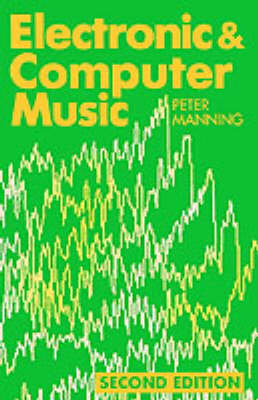Clarendon Paperbacks
1 total work
This is a revised and expanded edition of Peter Manning's classic introduction to electronic and computer music, dealing with the development of electronic and computer music from its birth to the present day. After an introductory chapter concerned with the antecedents of electronic music from the turn of the century to the Second World War, the book continues with the birth and development of the early 'classical' studios of the 1950s, examined both in terms of their design philosophy and also their compositional output. A chapter devoted to the characteristics of voltage control technology leads to a study of the subsequent upsurge of creative activity, considered under three headings: tape works, live electronic music, and the early use of electronics in rock and pop music. Attention is then turned to the sphere of computer music and its evolution from the early experiments with large commercial computers to the advanced music workstations of today.
This section has been significantly expanded from the first edition to take account of the rapid development of this technology since the early 1980s, in particular the introduction of MIDI and the increasing use of the personal computer as a music tool. A bibliography and an extensive discography are included. The primary objective throughout is to provide the reader with a critical perspective of the medium both in terms of its musical output and the philosophical and technical features which have shaped its growth.
This section has been significantly expanded from the first edition to take account of the rapid development of this technology since the early 1980s, in particular the introduction of MIDI and the increasing use of the personal computer as a music tool. A bibliography and an extensive discography are included. The primary objective throughout is to provide the reader with a critical perspective of the medium both in terms of its musical output and the philosophical and technical features which have shaped its growth.
